by Barry Carter
Created: September 12, 2010
Modified: September 12, 2010
In September of 2009 I wrote the
article about my Italian Prune Plum tree at:
http://www.subtleenergies.com/ormus/tw/plums.htm
In 2010 I continued to document the benefits of the ORMUS minerals for my plum tree compared to its parent tree fifty feet away, in my neighbor's yard. I took the comparison photograph below on September 12, 2010 because I wanted to compare it to a similar photograph that I took a year earlier:
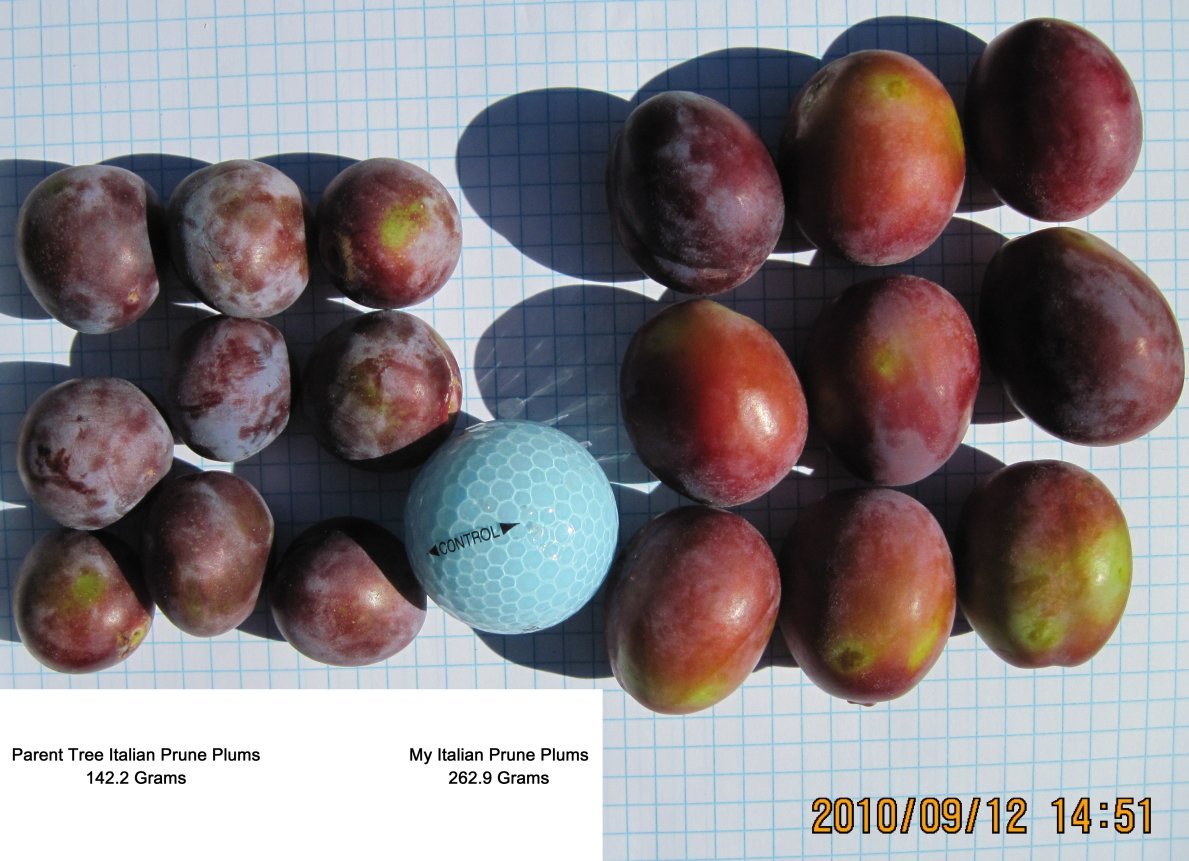
You can see that the plums in the picture above are not as large as the plums in the picture below from September 12, 2009:
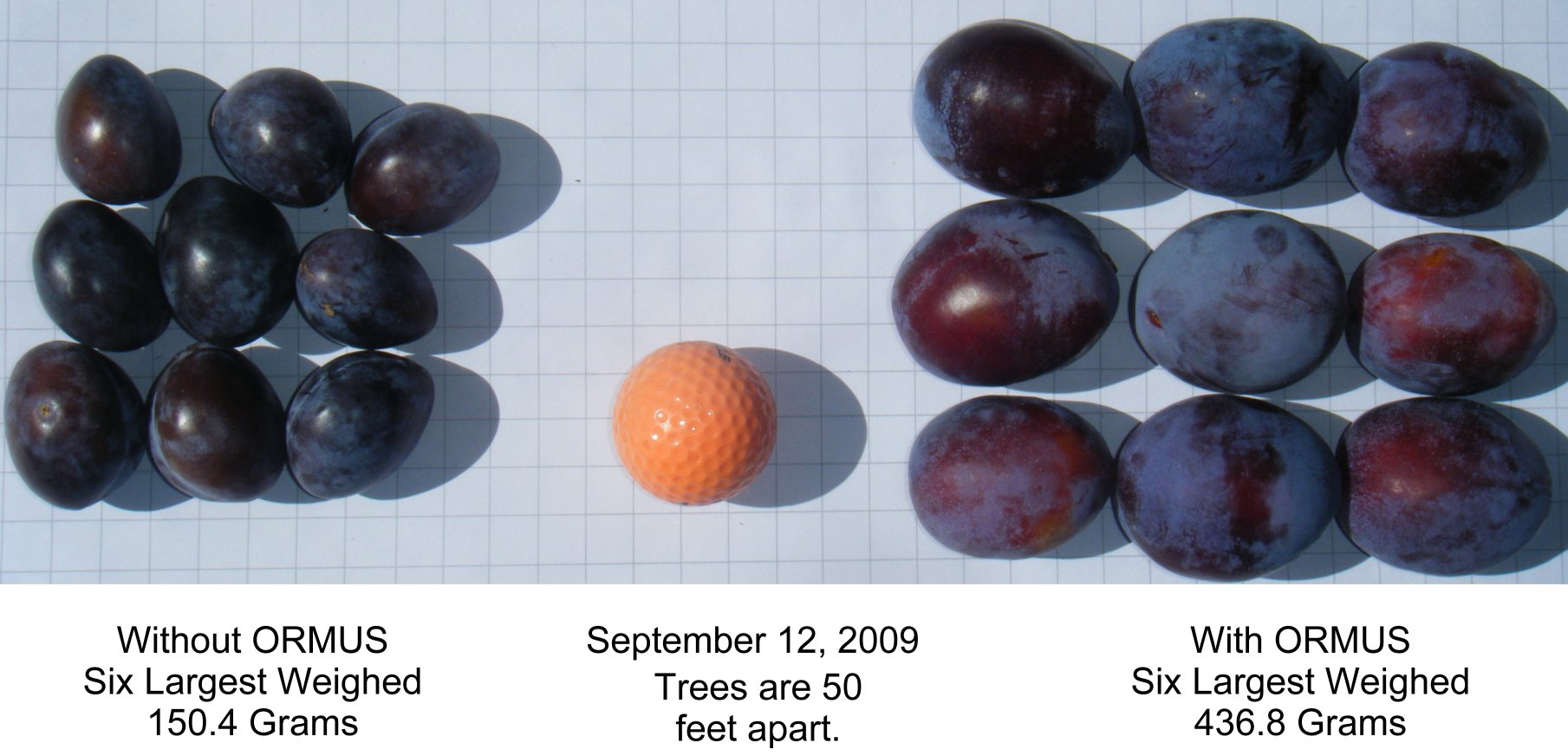
The question arises; why were the plums from both trees so much smaller in 2010 than they were in 2009? I suspect that the springtime weather in 2010 had a great deal to do with the decrease in size.
Baker City, Oregon is in agricultural zone 5a. According to: http://www.backyardgardener.com/plantname/pd_75be.html the Prunus domestica (Italian Prune) is suitable for USDA Hardiness Zone 5 to 9. Since Baker City is in the coldest zone that the Italian Prune is suitable for, we can assume that there will be years when the bloom times of these trees will be delayed by cold weather into late spring. This weather comparison seems relevant since the last snowfall in 2009 was on March 6:
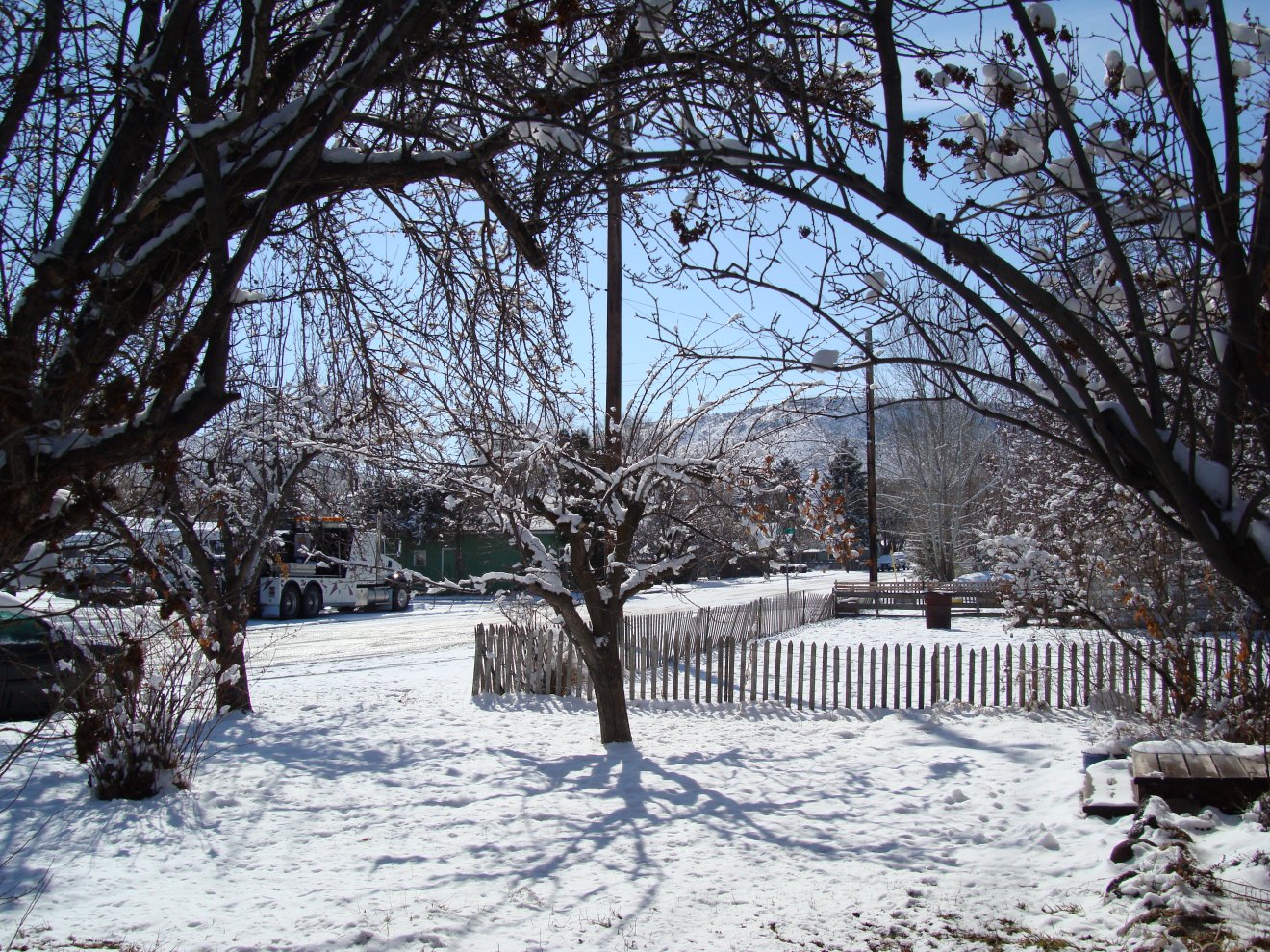
while the last snowfall in 2010 was much later in the spring, on May 5:
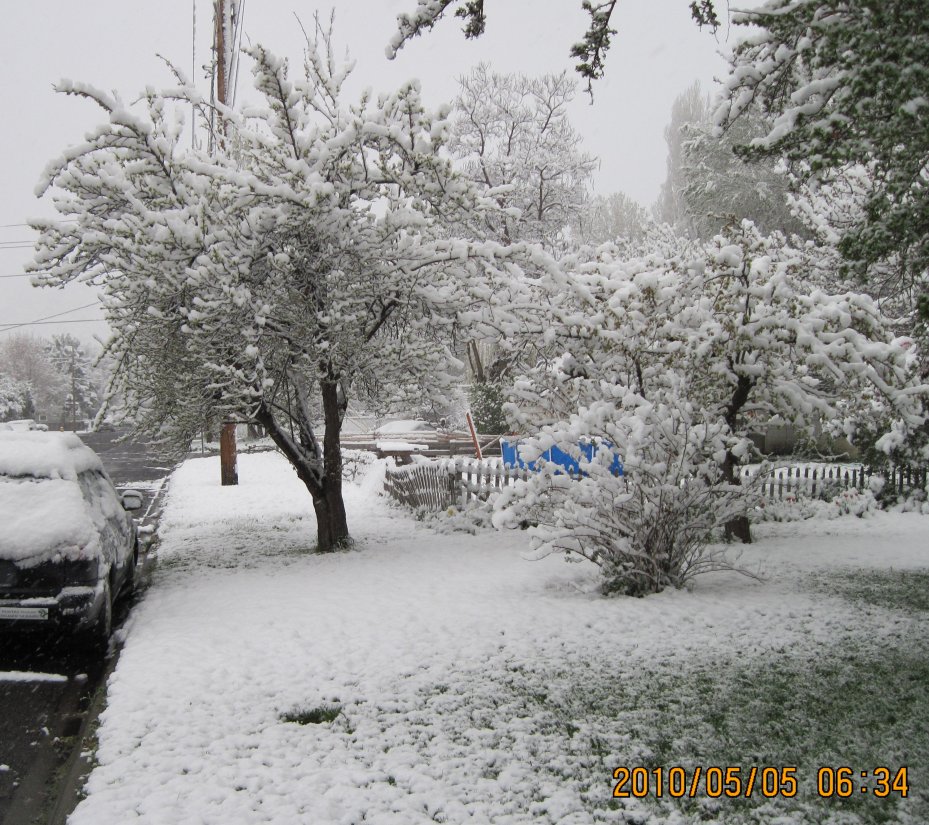
There was four and a half inches of snow on the roof of my car on the morning of this snow fall:
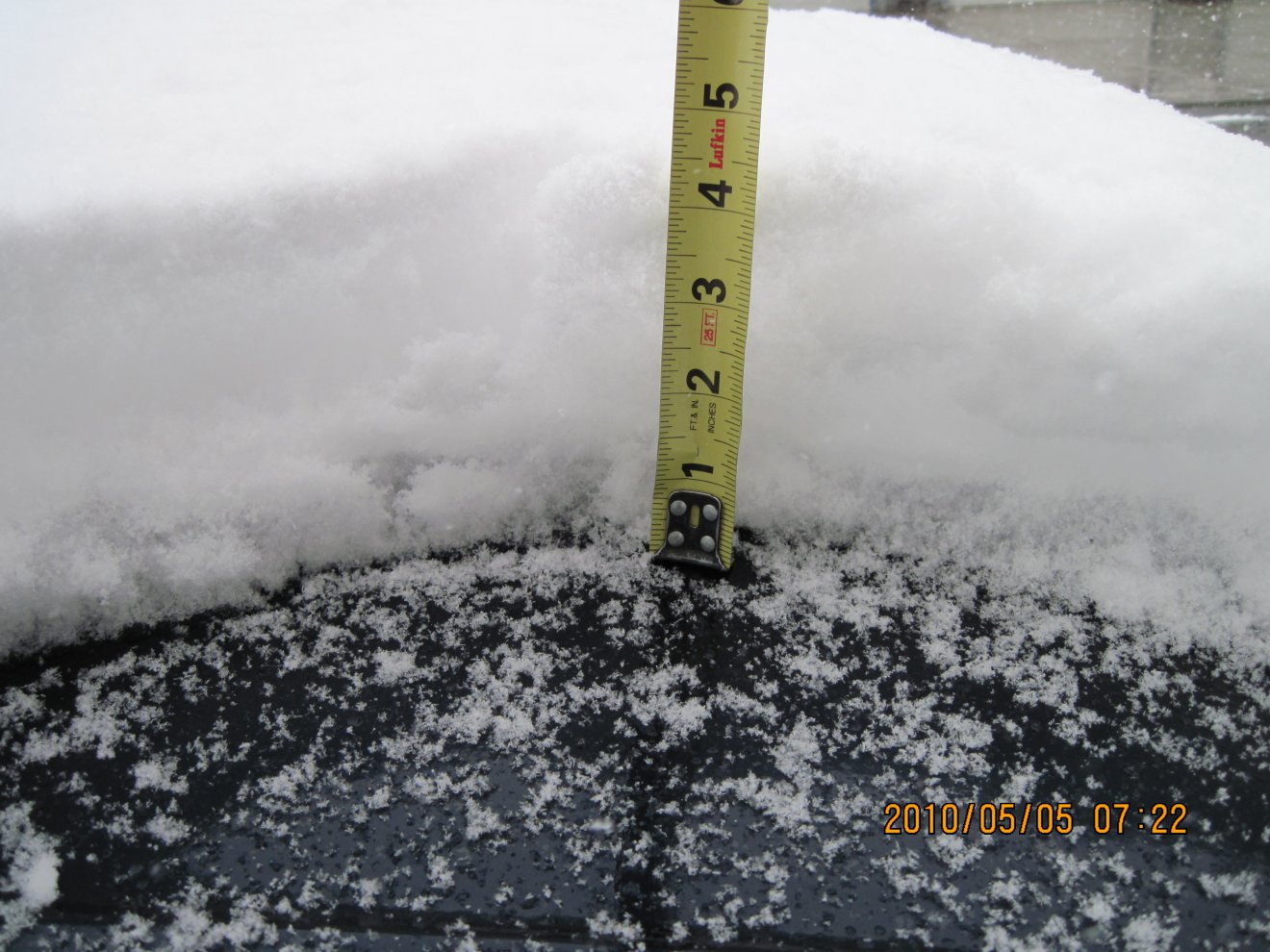
This snow also impacted the blooming of the tulips next to my front porch. Here is a picture I took the day before the snow:
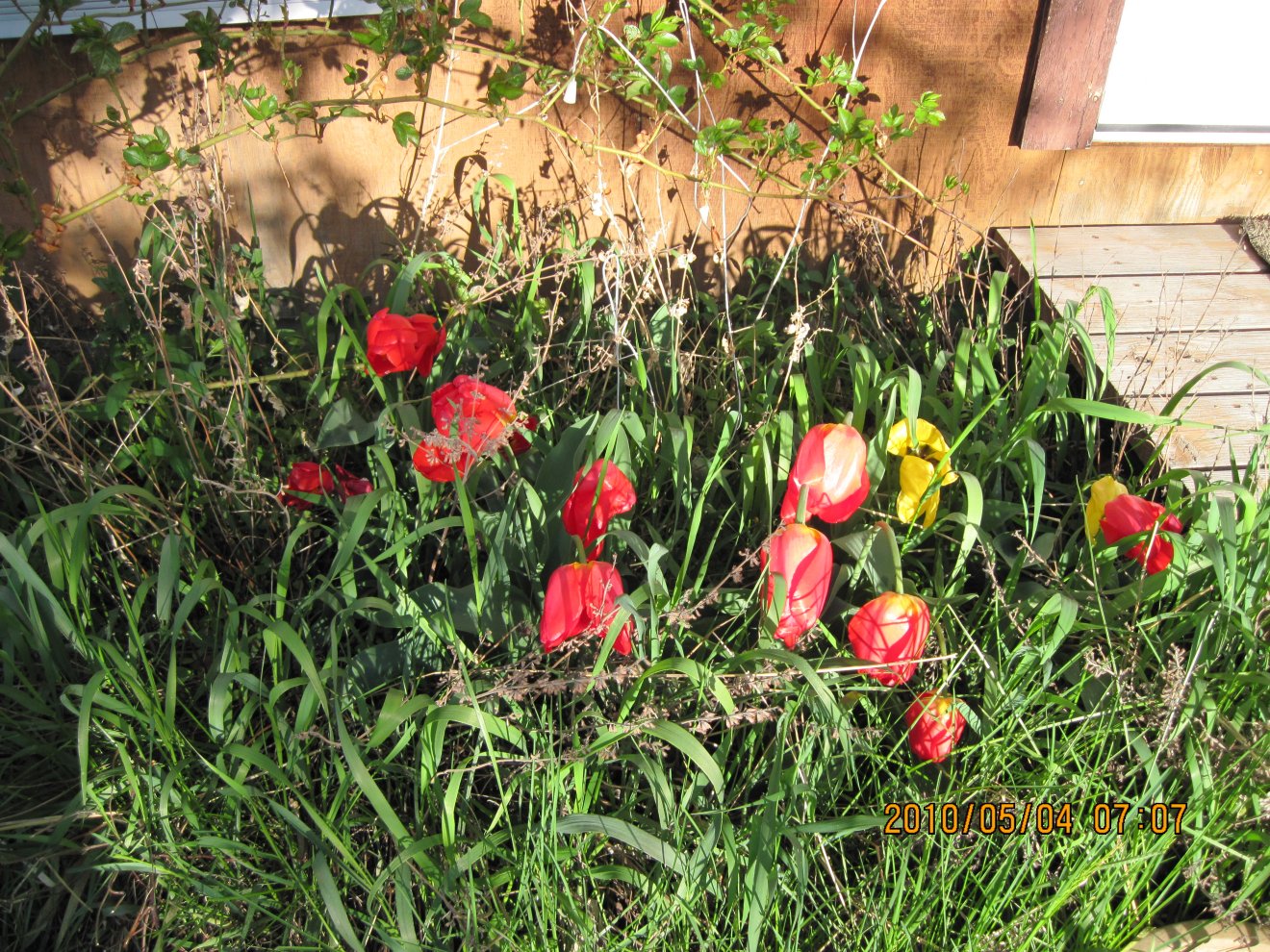
and here is a picture I took of the tulips on the day of the snow:
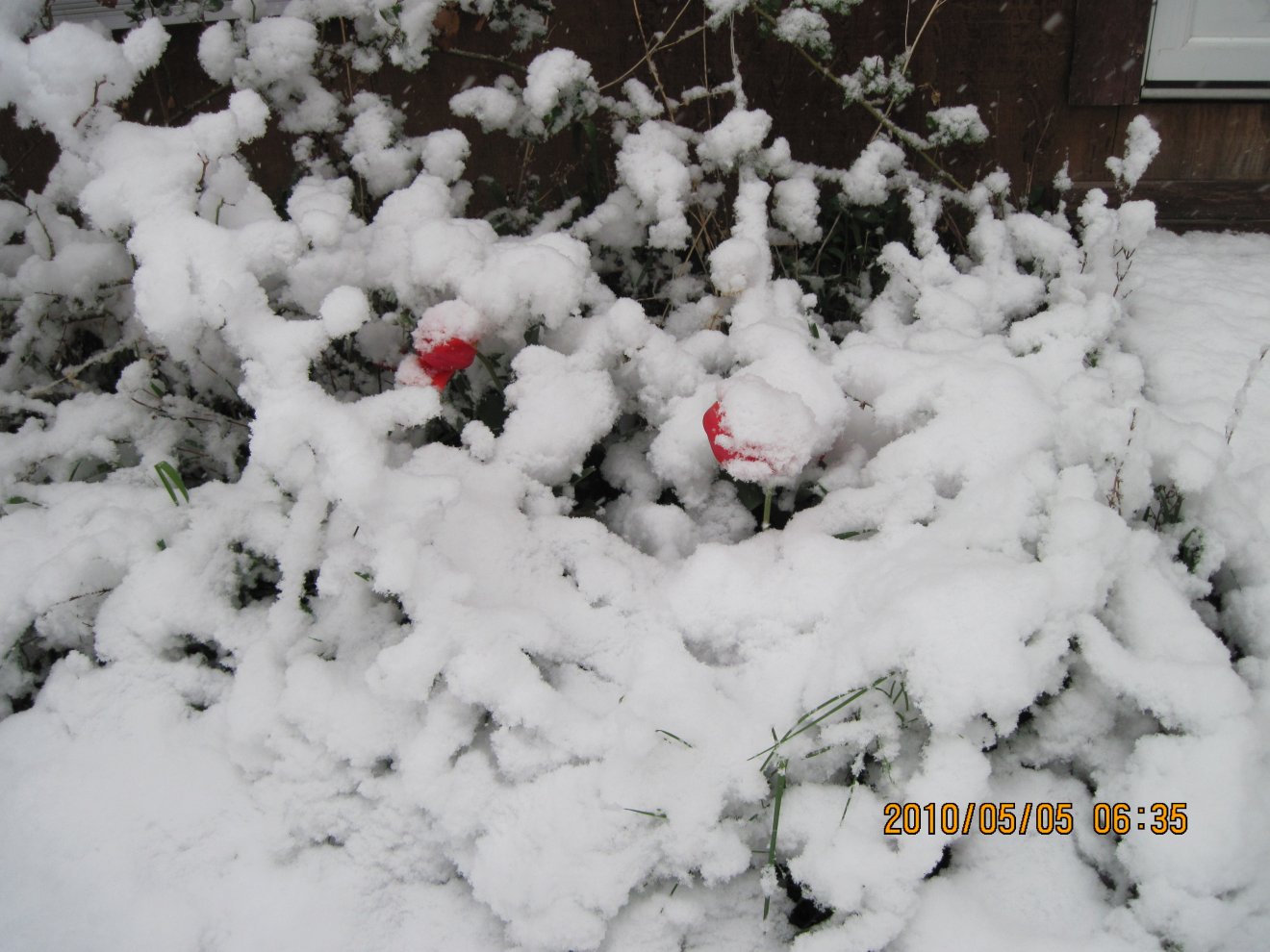
In 2008 we also had a late snow. This snow fall was not as deep but it happened a month later on June 10:
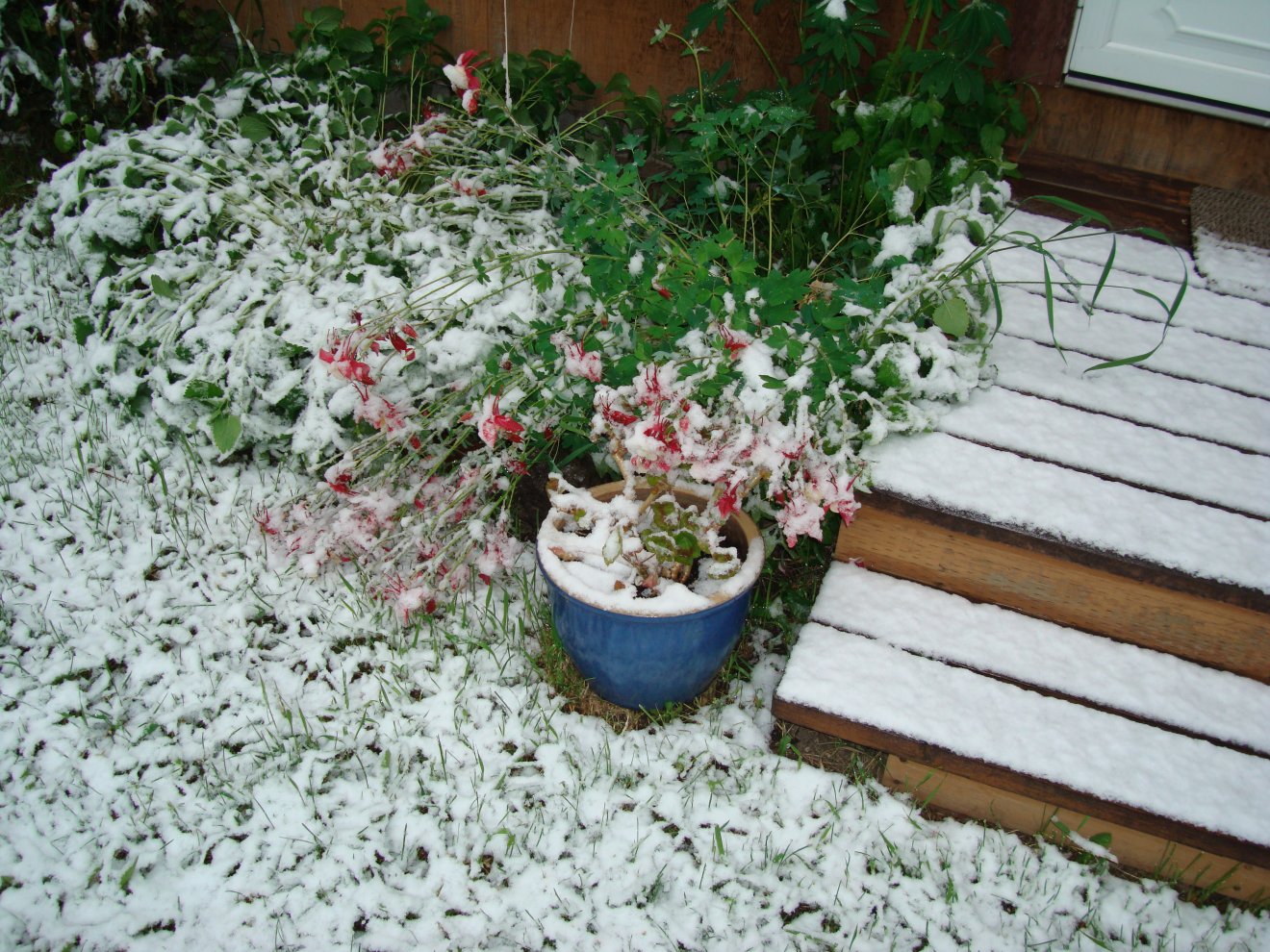
These late snows generally correlate with late spring frosts. This was true in 2010 but not so true in 2008. Here is a comparison of the plums from both trees on August 26, 2008:
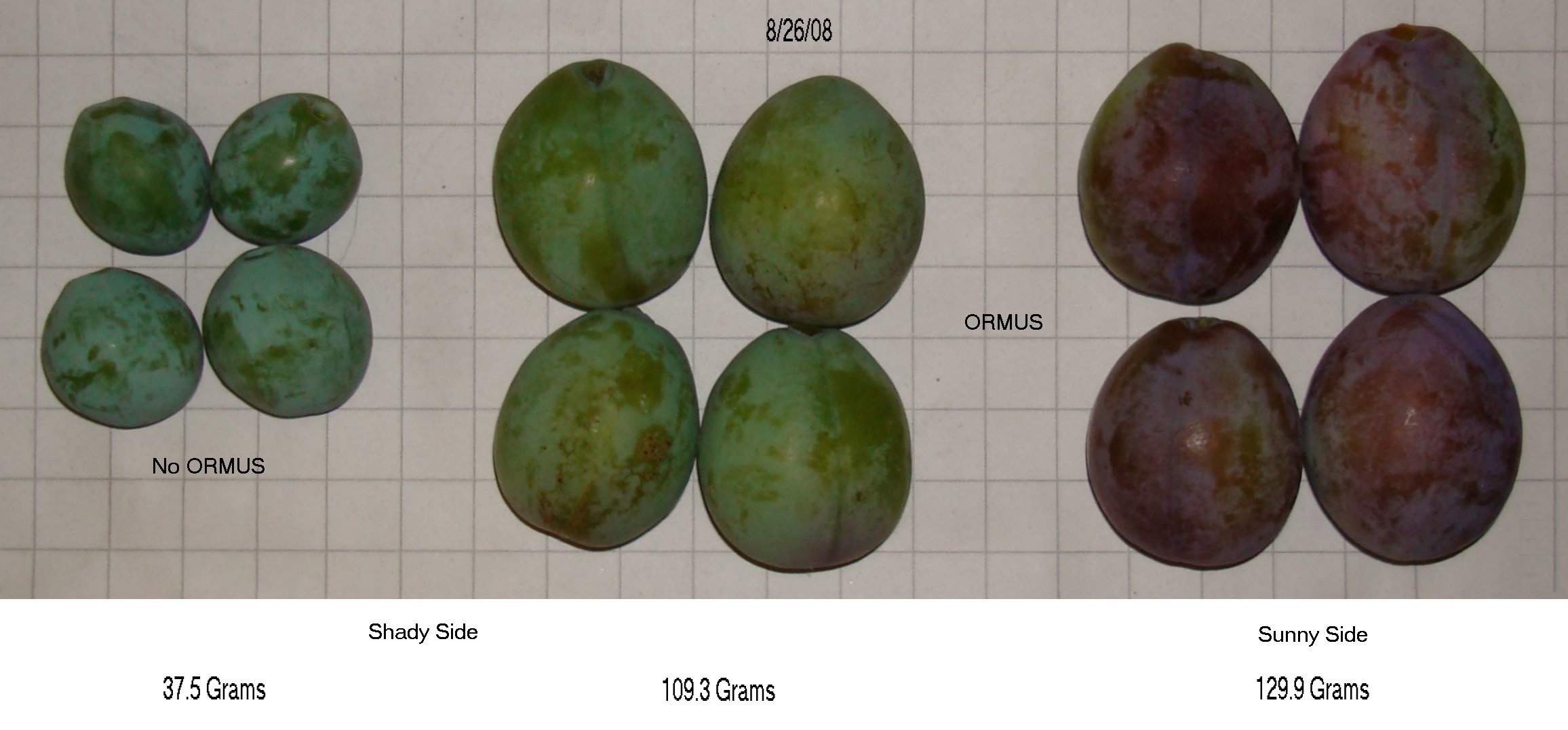
and on August 26, 2010:
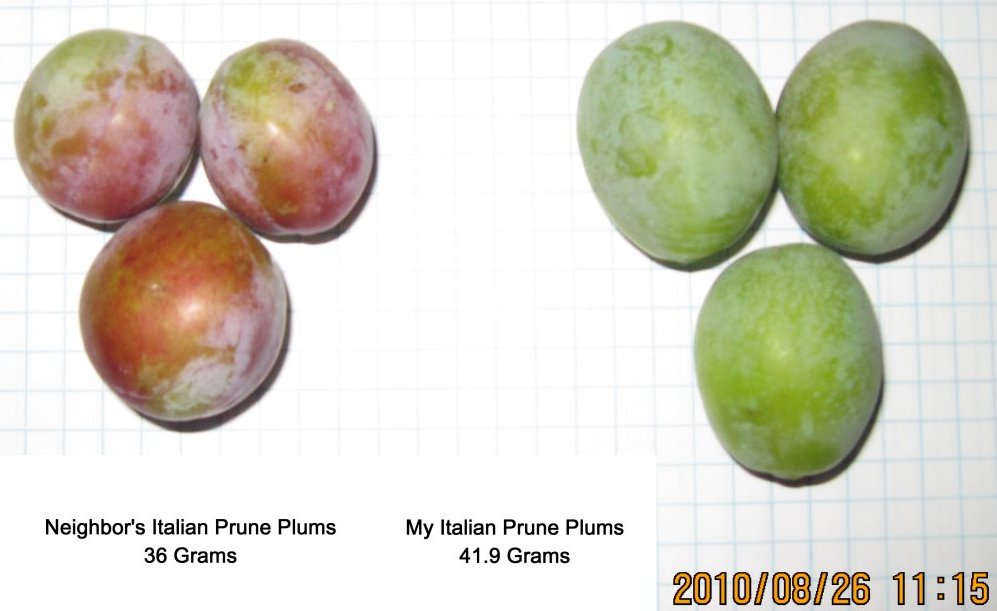
Here is a chart which compares the average weight of both shady side 2008 samples with the average weight of the two shady side samples from August 26, 2010:
Regardless of the yearly changes in yield and timing, there are some properties of these trees that are quite evident after years of growth.
My plum tree was transplanted, as a seedling, from beneath my neighbor's plum tree. (It was probably planted by the squirrels who like to bury seeds for later consumption.) Here is a picture of my plum tree in 1984, about a year after it was transplanted:
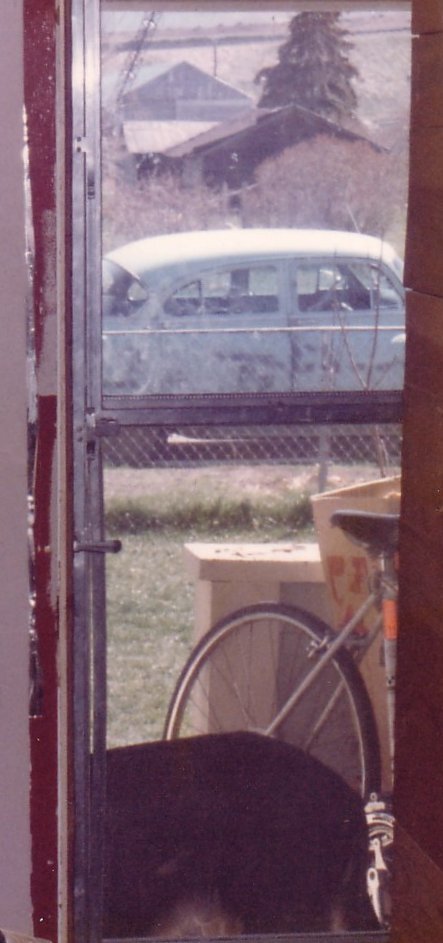
Directly above the bicycle seat in the picture, you can see my apricot tree. To the left of that is a metal fence post and behind that fence post is my plum tree. You can only see a couple of branches coming up from it. I removed the fence a year or so after this picture was taken.
Unfortunately, I cannot find any old photographs of my neighbor's plum tree from this early time. The earliest picture I can find was taken through my living room window in the winter of 1988. The camera was pointed toward the southeast and the picture was taken before I added the greenhouse room on the south side of my house:
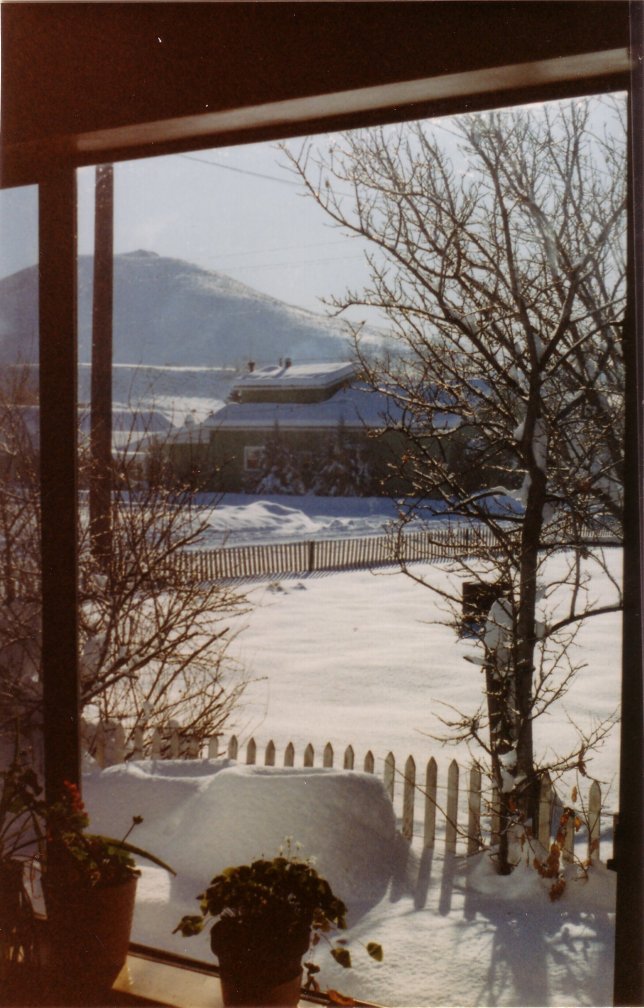
My neighbor's plum tree is the tree toward the right side of the picture above.
On September 7, 2010, I took digital pictures of the first two feet of my neighbor's plum tree trunk and the first two feet of my plum tree trunk. I actually used a yardstick to keep the camera lense the same distance from each tree so that, when I joined the pictures, the size comparison would be accurate and visible. In the picture below, my neighbor's tree trunk is on the left and mine is on the right:
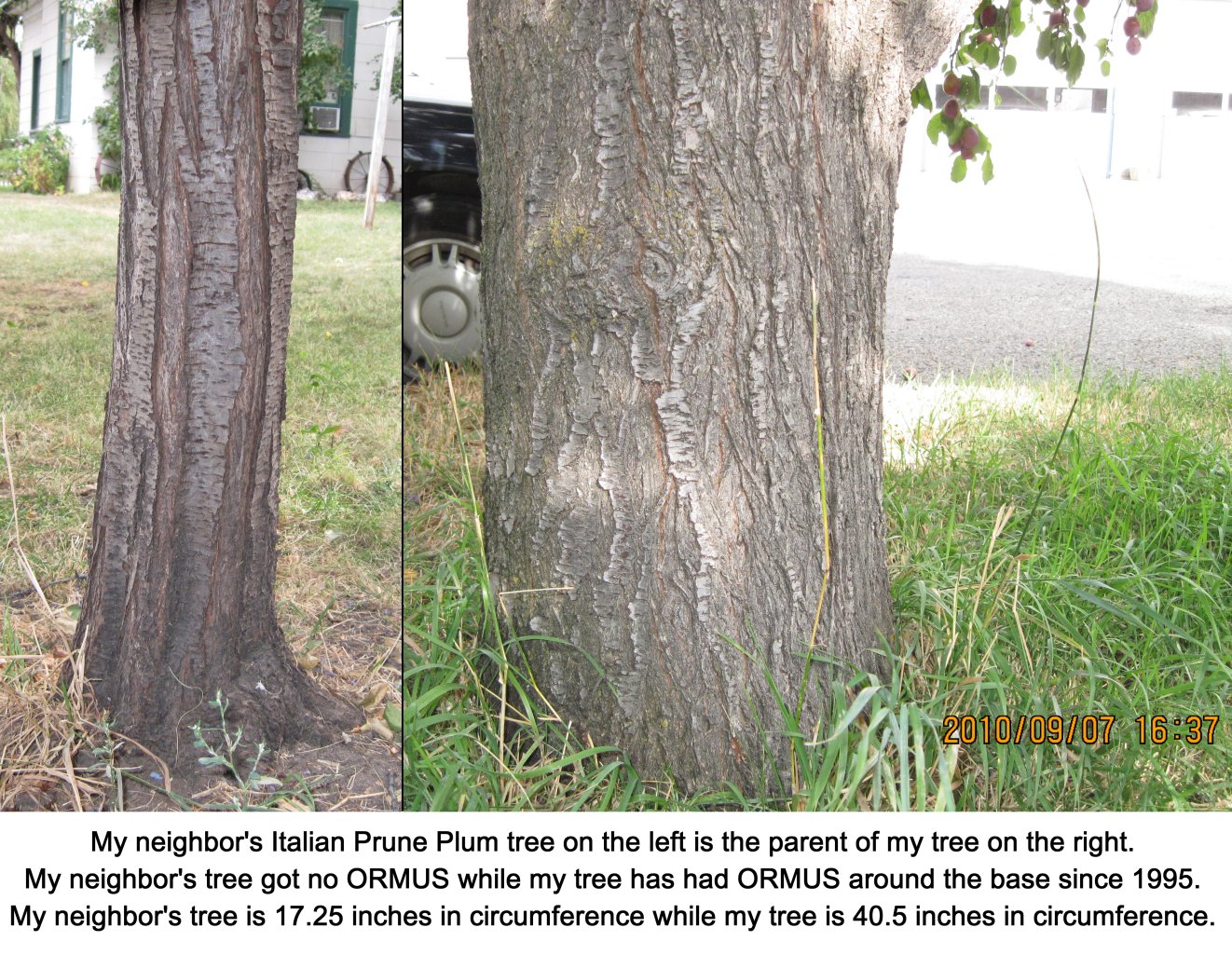
Then I measured the circumference of both trees at one foot above ground level. The circumference measurements, in the image above, translate into 551% more wood in the first two feet of my tree compared to the first two feet of its parent tree.
I am not sure exactly how this relates to total yield of plums but on June 8, 2010 I did a count of the number of baby plums on a typical, foot-long section of branch on my tree and compared it to the number of baby plums on a typical foot-long section of branch from my neighbor's tree and found that my tree had twice as many baby plums in its branch section. Here are these pictures:
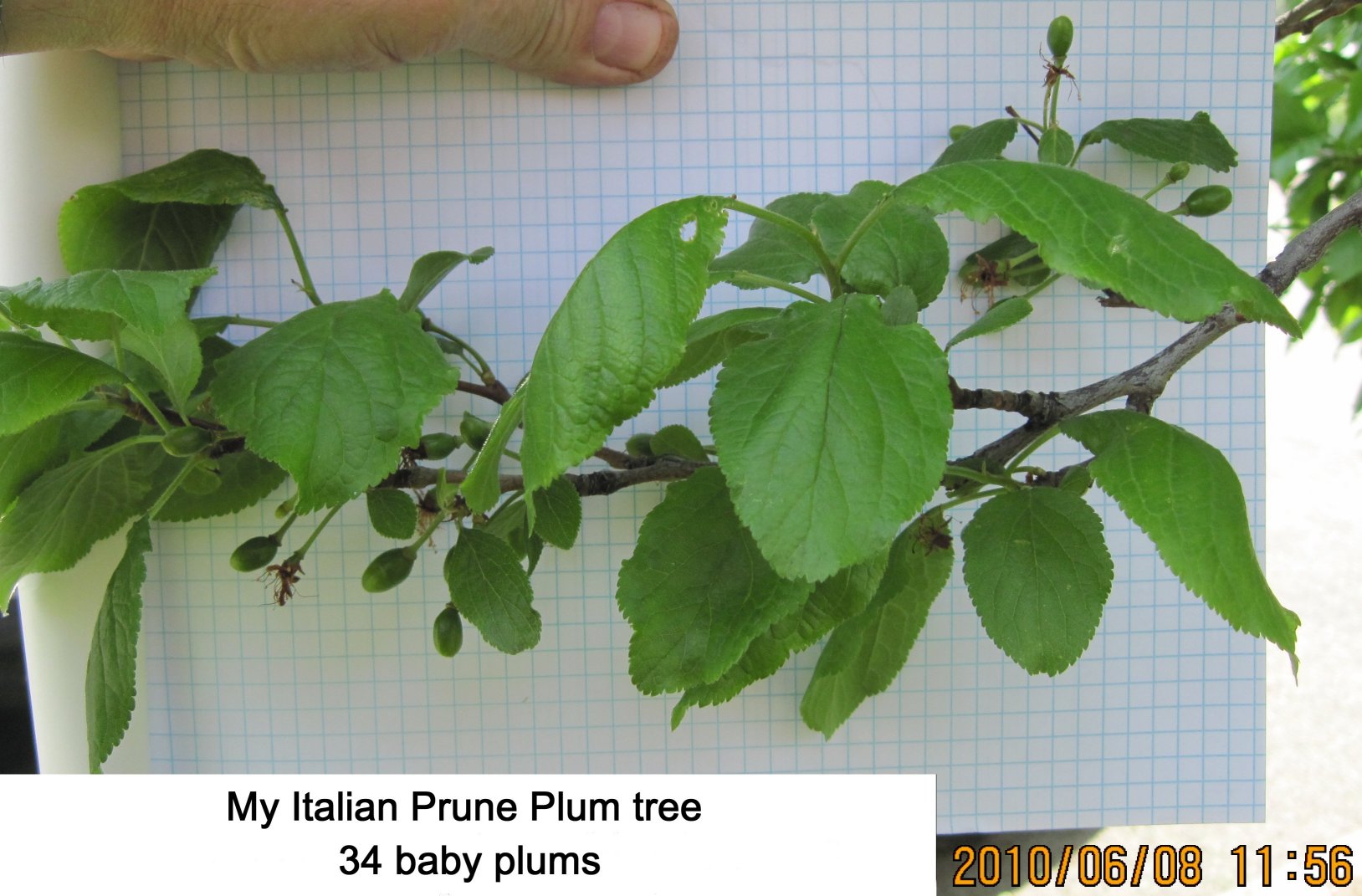
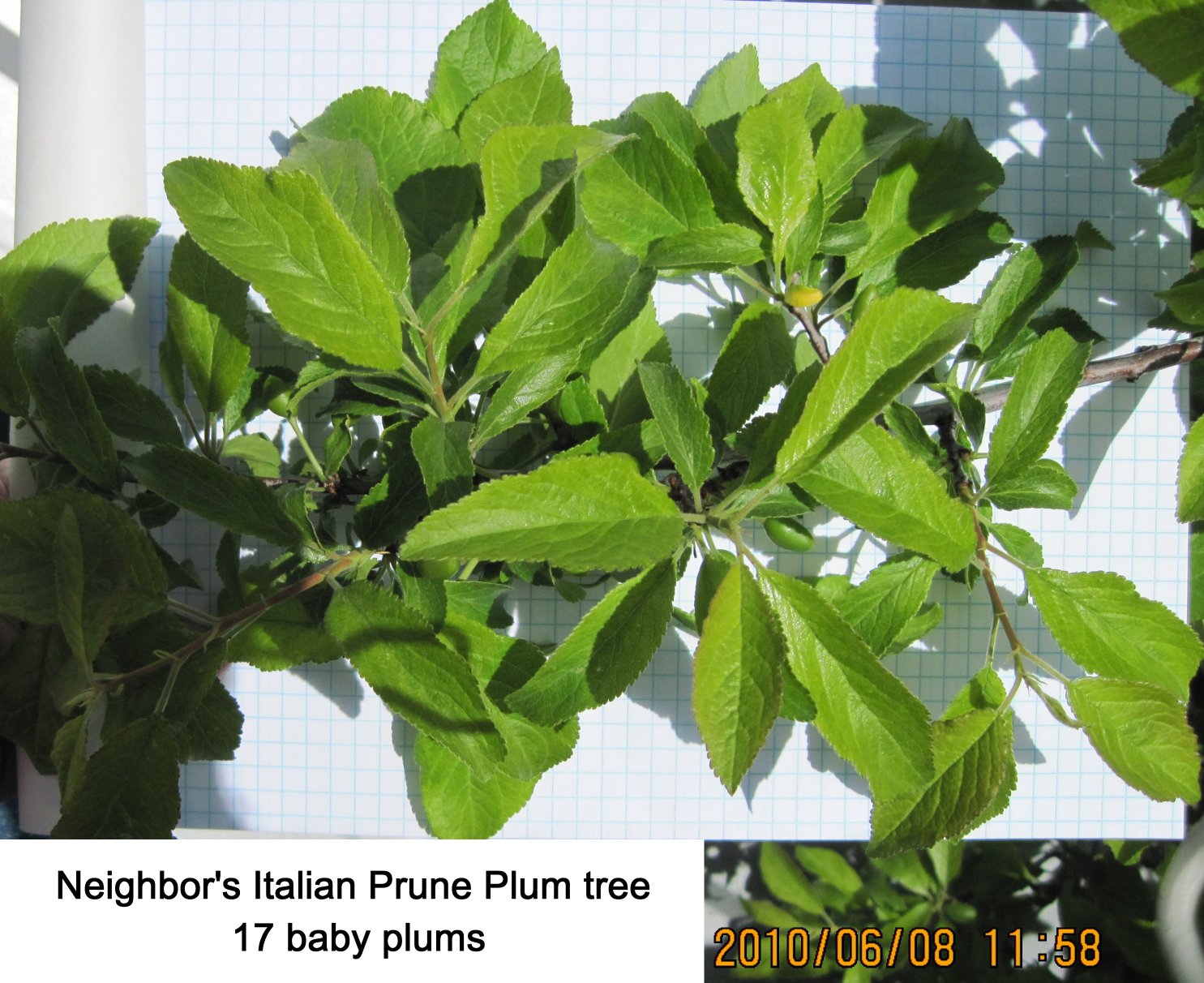
This difference in abundance is probably why I was so amazed by the clumps of plums on my tree that I made the following claim on several online forums:
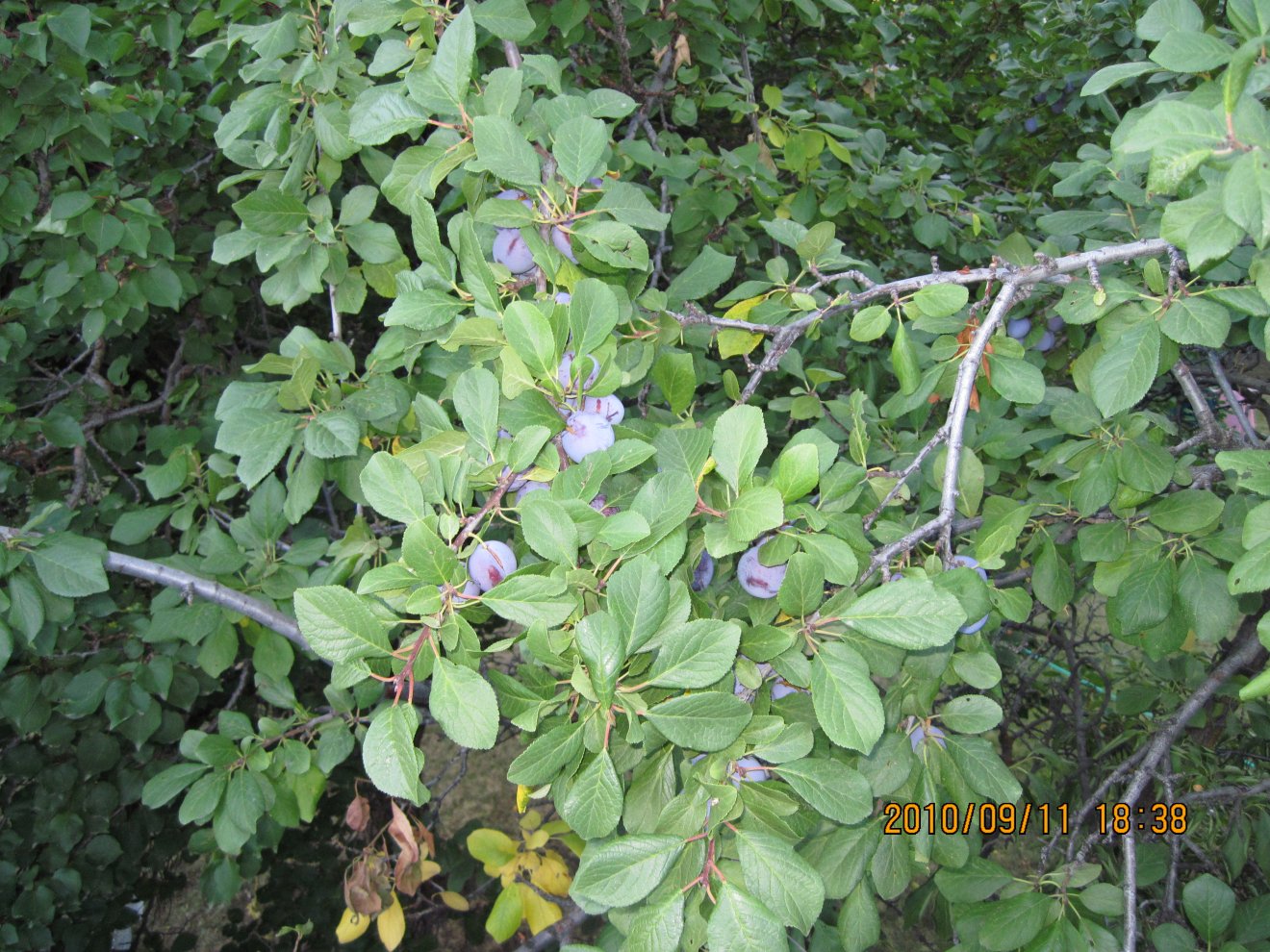
This is a picture of plum clusters on my tree:
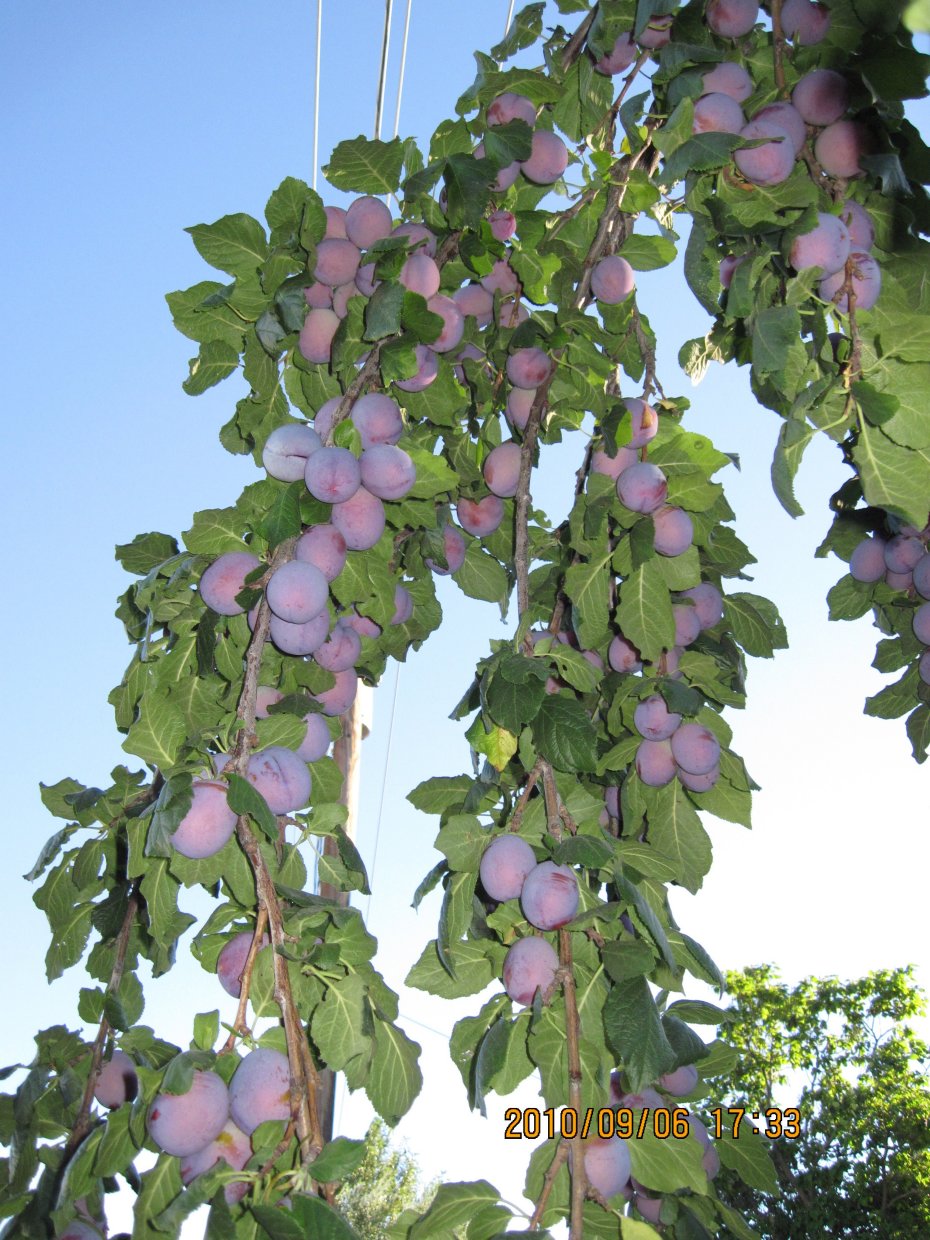
All of this begs the question; how much more fruit is my tree producing than my neighbor's tree? Twice as many plums that are two to three times as large would be somewhere between four and six times as much fruit. This year's late crop of plums will probably be tasty within two or three weeks compared to last year's which were mostly ripe by September 12.
I will update this page as the plums finish ripening.
http://www.subtleenergies.com/ormus/tw/plums.htm
In 2010 I continued to document the benefits of the ORMUS minerals for my plum tree compared to its parent tree fifty feet away, in my neighbor's yard. I took the comparison photograph below on September 12, 2010 because I wanted to compare it to a similar photograph that I took a year earlier:

You can see that the plums in the picture above are not as large as the plums in the picture below from September 12, 2009:

Following is a table comparing sizes
between my plums and my neighbor's plums on September 12, 2009 and
September 12, 2010:
| Year | Average weight in grams of plums from my neighbor's tree | Average
weight in grams of plums from my tree |
My plums were this much larger on September 12 |
| 2009 | 25.1 | 72.8 | 290% |
| 2010 | 15.8 | 29.2 | 185% |
The question arises; why were the plums from both trees so much smaller in 2010 than they were in 2009? I suspect that the springtime weather in 2010 had a great deal to do with the decrease in size.
Baker City, Oregon is in agricultural zone 5a. According to: http://www.backyardgardener.com/plantname/pd_75be.html the Prunus domestica (Italian Prune) is suitable for USDA Hardiness Zone 5 to 9. Since Baker City is in the coldest zone that the Italian Prune is suitable for, we can assume that there will be years when the bloom times of these trees will be delayed by cold weather into late spring. This weather comparison seems relevant since the last snowfall in 2009 was on March 6:

while the last snowfall in 2010 was much later in the spring, on May 5:

There was four and a half inches of snow on the roof of my car on the morning of this snow fall:

This snow also impacted the blooming of the tulips next to my front porch. Here is a picture I took the day before the snow:

and here is a picture I took of the tulips on the day of the snow:

In 2008 we also had a late snow. This snow fall was not as deep but it happened a month later on June 10:

These late snows generally correlate with late spring frosts. This was true in 2010 but not so true in 2008. Here is a comparison of the plums from both trees on August 26, 2008:

and on August 26, 2010:

Here is a chart which compares the average weight of both shady side 2008 samples with the average weight of the two shady side samples from August 26, 2010:
| Year | Neighbor's Tree | My Tree | My plums were this much larger on August 26 |
| 2008 | 12 | 27.3 | 228% |
| 2010 | 9.4 | 14.0 | 149% |
Regardless of the yearly changes in yield and timing, there are some properties of these trees that are quite evident after years of growth.
My plum tree was transplanted, as a seedling, from beneath my neighbor's plum tree. (It was probably planted by the squirrels who like to bury seeds for later consumption.) Here is a picture of my plum tree in 1984, about a year after it was transplanted:

Directly above the bicycle seat in the picture, you can see my apricot tree. To the left of that is a metal fence post and behind that fence post is my plum tree. You can only see a couple of branches coming up from it. I removed the fence a year or so after this picture was taken.
Unfortunately, I cannot find any old photographs of my neighbor's plum tree from this early time. The earliest picture I can find was taken through my living room window in the winter of 1988. The camera was pointed toward the southeast and the picture was taken before I added the greenhouse room on the south side of my house:

My neighbor's plum tree is the tree toward the right side of the picture above.
On September 7, 2010, I took digital pictures of the first two feet of my neighbor's plum tree trunk and the first two feet of my plum tree trunk. I actually used a yardstick to keep the camera lense the same distance from each tree so that, when I joined the pictures, the size comparison would be accurate and visible. In the picture below, my neighbor's tree trunk is on the left and mine is on the right:

Then I measured the circumference of both trees at one foot above ground level. The circumference measurements, in the image above, translate into 551% more wood in the first two feet of my tree compared to the first two feet of its parent tree.
I am not sure exactly how this relates to total yield of plums but on June 8, 2010 I did a count of the number of baby plums on a typical, foot-long section of branch on my tree and compared it to the number of baby plums on a typical foot-long section of branch from my neighbor's tree and found that my tree had twice as many baby plums in its branch section. Here are these pictures:


This difference in abundance is probably why I was so amazed by the clumps of plums on my tree that I made the following claim on several online forums:
"I
guess that people don't realize that plums don't usually grow in
bunches like grapes"
Someone
corrected my mistake on one of the ORMUS forums.
They pointed out that Italian Prune Plums are generally clustered
together like grapes. I did not realize this because I had not seen it
on the other plum trees in my neighborhood. This is what I was used to
seeing in Baker City before ORMUS:
This is a picture of plum clusters on my tree:

All of this begs the question; how much more fruit is my tree producing than my neighbor's tree? Twice as many plums that are two to three times as large would be somewhere between four and six times as much fruit. This year's late crop of plums will probably be tasty within two or three weeks compared to last year's which were mostly ripe by September 12.
I will update this page as the plums finish ripening.